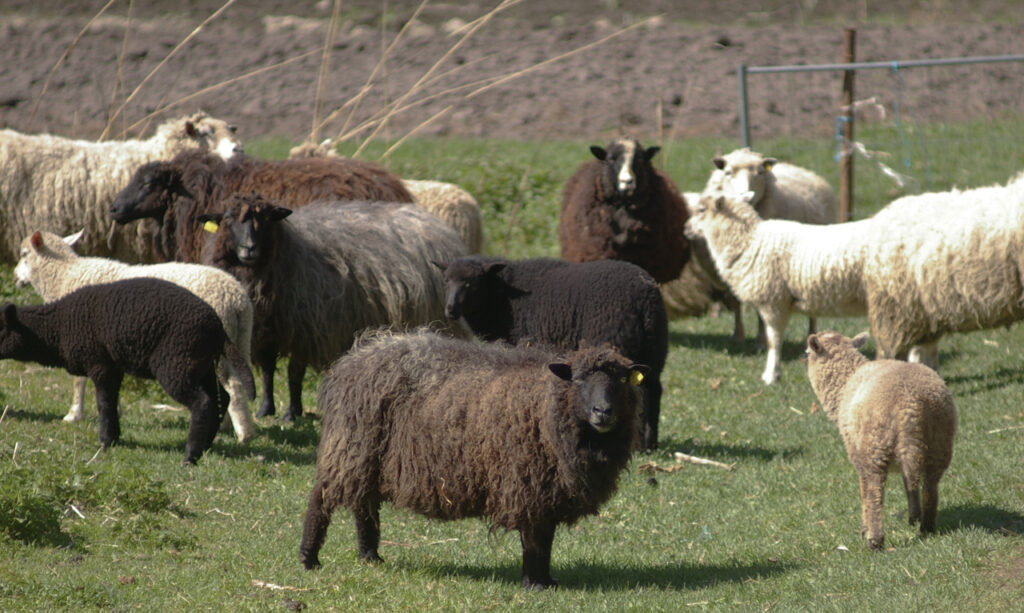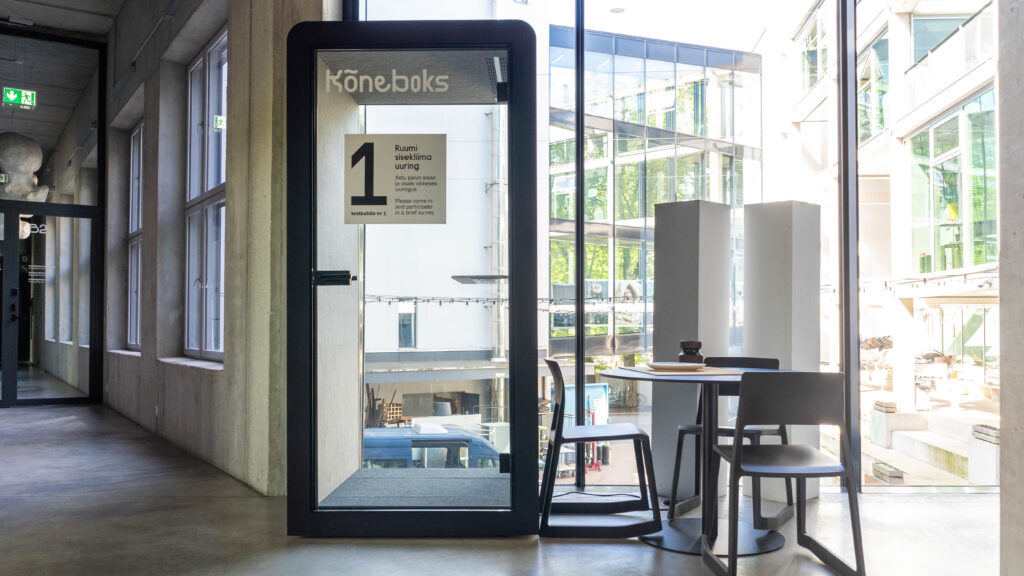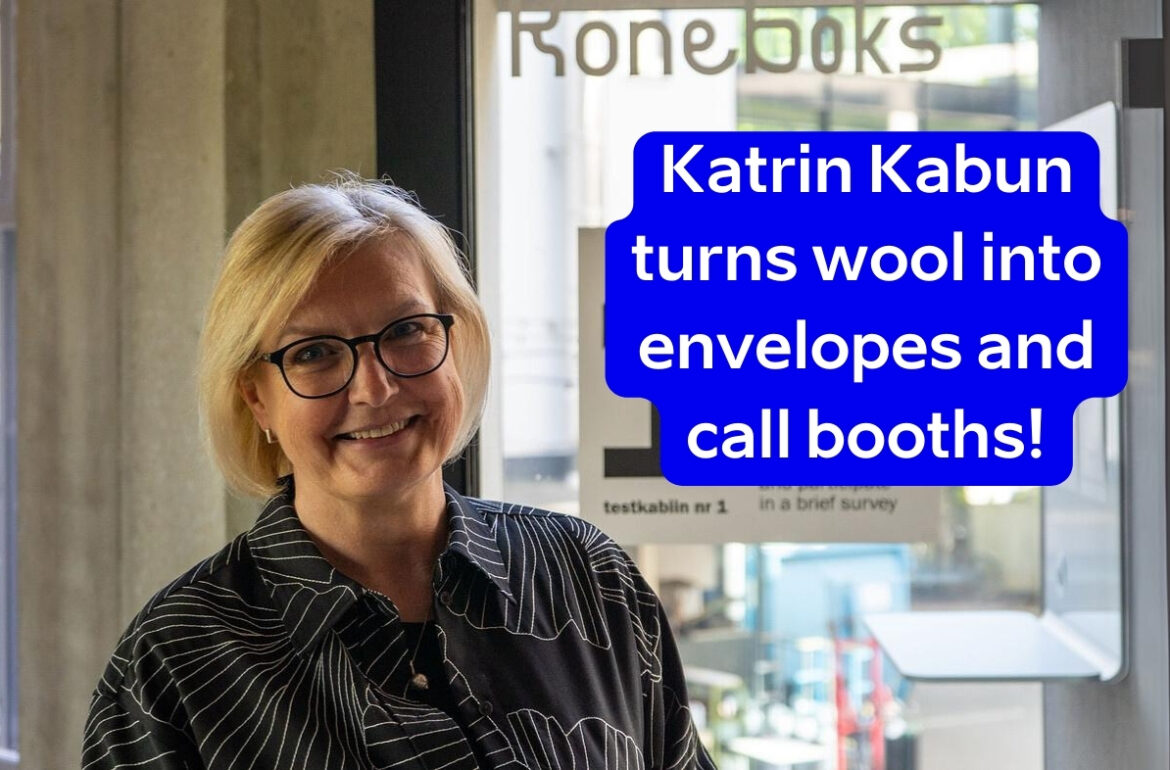Table of Contents
Katrin Kabun and her mission
Katrin Kabun wants to bring nature closer to people. A doctoral student at the Estonian Academy of Arts in Tallinn, she has been working for years to study the properties of wool and the ways in which it could be applied in interior design. In an increasingly urbanized society, where people spend their days in synthetic environments, plagued by ventilation issues and associated health problems, as well as a sense of unease, she believes there are answers.
The aim of her doctoral work, which she aims to finish up by early next year, is to examine the properties and potential use cases of wool as a substitute for widely used synthetic textiles. Kabun has been undertaking her PhD at EKA since 2017, but her interest in wool, and sheep goes back nearly two decades, when she stumbled upon the existence of native Estonian sheep, which have been mostly replaced in intensive agriculture by foreign cultural breeds over time.
Rediscovering Native Estonian Sheep
Though these small, colorful sheep had mostly disappeared during the Soviet era, Kabun with the Estonian Native Sheep Association was able to find local farmers who had continued to rear them on the side. With the support of the United Nations Educational, Scientific and Cultural Organization (UNESCO) and the Estonian Fund for Nature, she collected samples from the sheep and had them analyzed at the University of Tartu and then compared to a database of breeds in Finland. “We learned that they were a totally different breed, and that we had our own native sheep,” she recalled.

During the course of that project, which took place in 2006, Kabun also started a dialogue with sheep farmers who mostly raised sheep for meat production, and discovered that their wool was mostly thrown away, either incinerated or buried. “At first, I didn’t understand how it was possible,” she said. “Wool is a unique material. And it’s not just an Estonian problem. This happens all over the world, in Europe, and in Australia.”
Wool – an untapped resource
Since sheep needed to be sheared once or twice a year, it meant that there was actually an enormous amount of wool being produced that was being treated, in essence, as an industrial waste product. As a designer at heart, the wheels began to turn in Kabun’s mind. She saw an opportunity.
“The farmers are not happy about this problem, they need to get rid of the wool somehow, but as a designer, I recognized that we had a natural material, a bioresource,” Kabun commented. Her idea was to use this leftover wool as a replacement for synthetic materials, which need to be reduced. “This is design thinking,” she noted. “I saw a problem and knew I had to solve it.”
Kabun was inspired and this inspiration led her back to school. She did a master’s in economics first at Tallinn University of Technology (TalTech), but then pursued a master’s in textile design at EKA, which she obtained in 2017. In some ways, textile design is her true love, but Kabun said that the master’s in economics is more relevant than ever when it comes to her doctoral thesis.
But there was an interesting challenge when she embarked on her study of the use of wool in textile design: the scientific literature was lacking. “There were no articles,” she recalled. “Now there are more that are focused more intensively on this issue, but I couldn’t understand why people weren’t publishing on it. That’s why I felt I had to deal with it. Someone had to,” she said.
Kabun’s interest in wool was not solely linked to the agricultural waste issue that first inspired her. “It has great properties,” she said. “It is soft and elastic, it absorbs moisture and repels water,” she added. Wool also has antibacterial properties. It is in a sense a wonder fiber. “Wool is a natural, hi-tech material,” said Kabun. Laboratories, she added, have tried and failed to create a similar synthetic wool fiber, “but cannot get all the properties of wool into one fiber.”

Wool in modern design and research
Kabun’s doctoral thesis is entitled, “Rehabilitation of Wool: Implementing Archaic Fiber in a Modern Design Context.” In it, she is exploring the potential to apply wool in fields outside of its traditional use. Kabun has also relied on studies of wool to describe in depth its beneficial properties.
She acknowledged that there are challenges. “Obviously, the range of problems involved in the topic under study is very wide and therefore the methods used are different,” Kabun commented. “There is no one specific hypothesis and no straightforward path to find an answer.”
She characterized the work as creative research, and said that as a designer, she is inclined to look across disciplines, and to collaborate with specialists from very different fields, bringing together different ways of thinking and creating synergies and discussions to find the best way to solve the problem. “This is all very interesting on the one hand, but a lot of time and energy is spent on side activities, searching and coordinating,” she noted.
Kabun is also the co-founder of Woola, a Tallinn-based company that uses wool collected from sheep farmers to produce packaging material. But she also sees potential use cases in interior design. “I want to bring these materials closer to people,” she said, noting that the interior air quality in modern apartments is often poor due to the use of materials that emit chemicals.
Within Woola, almost all of the raw materials used are wool-based, but they still use natural binding materials for envelopes, for example. The company is striving however to go to 100% wool as a source material, by creating its binding agents also from wool. “A hundred percent wool means 100% biodegradable,” she explained.
Another interesting use case was highlighted in a partnership with Silen, a furniture company based near Tallinn, which manufactures call booths. Together, they created two booths, one made of wool, another made of a synthetic material. These booths were installed at EKA, and measured for indoor climate quality. Users of the booths were asked to fill out surveys too.
“In general, people felt better in the wool environment,” she said. The study with Silen is ongoing. “People don’t think about it,” added Kabun, “but they can feel it.”
Going forward, Kabun said that her research has raised more questions that will need to be addressed. One is related to material development and creating new sustainable solutions by modifying wool. Another line of research relates to the effects of wool on the psyche and body.
“The tests carried out provided interesting inputs that would need further detailed research,” she said.
This article is written by Justin Petrone. This article was funded by the European Regional Development Fund through Estonian Research Council.
If the wonders of nature science captivate you and the mysteries of the natural world fascinate you, explore more breathtaking discoveries on our webpage and read more about How Unique honey DNA test created by Estonian scientists and beekeepers!
 Back
Back



